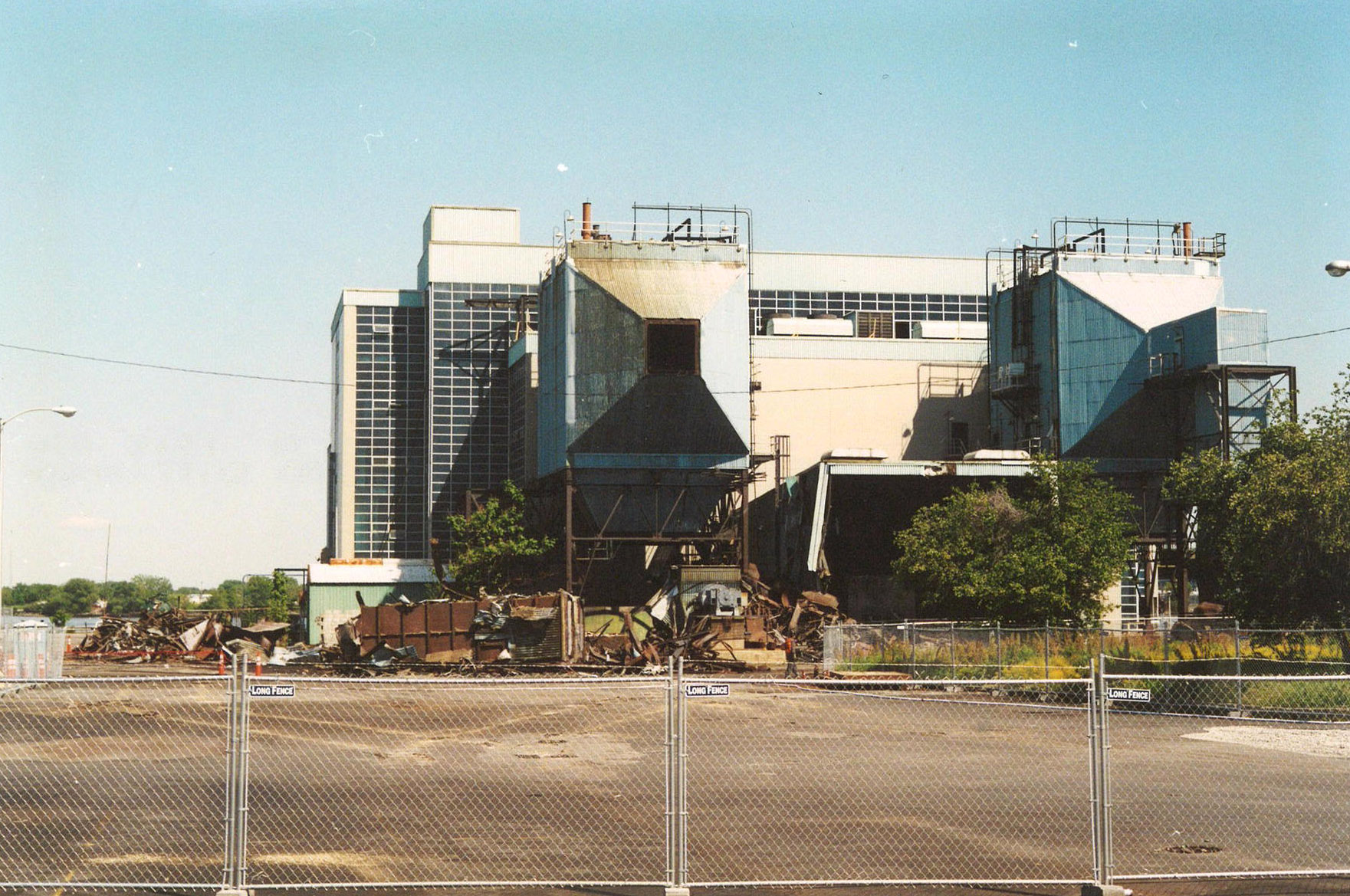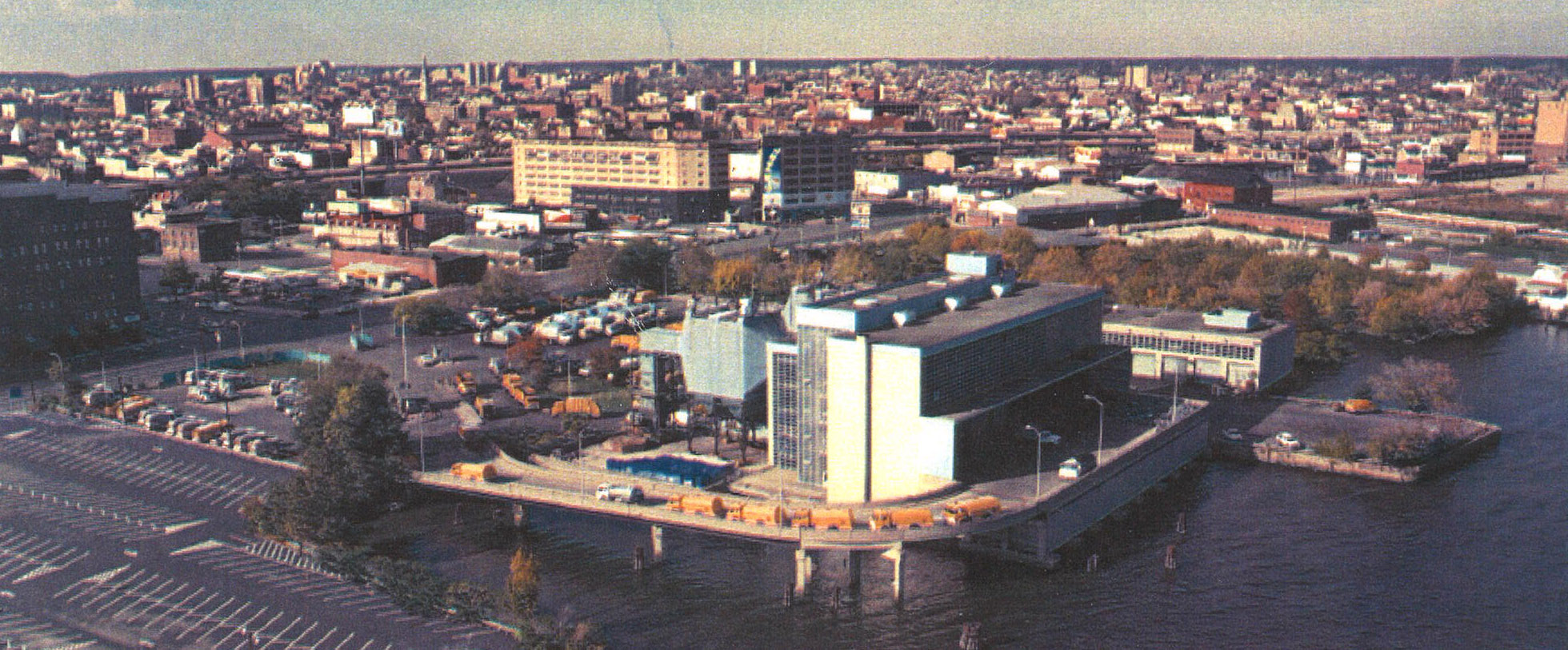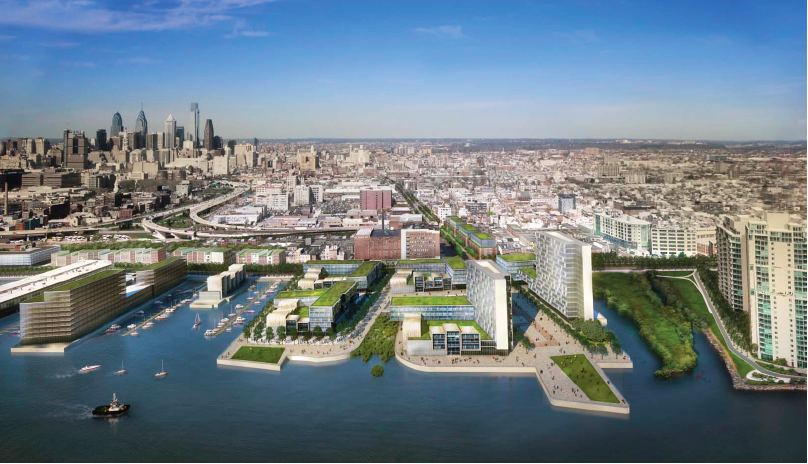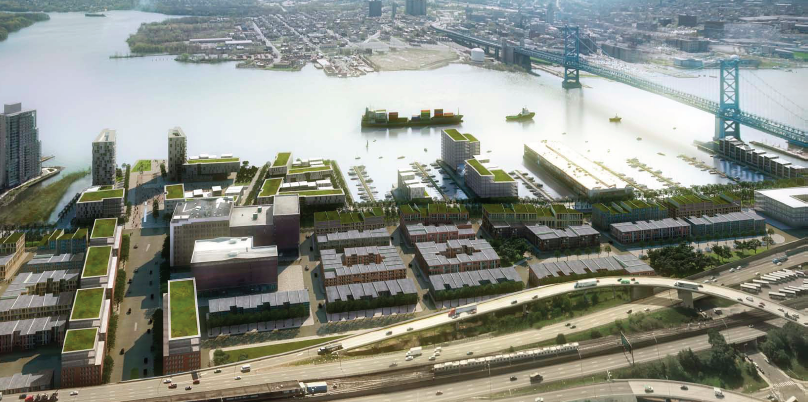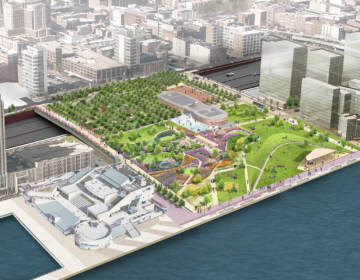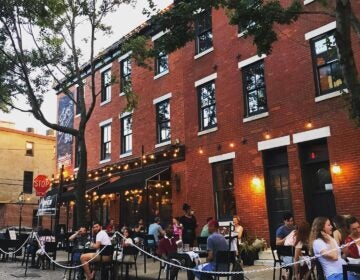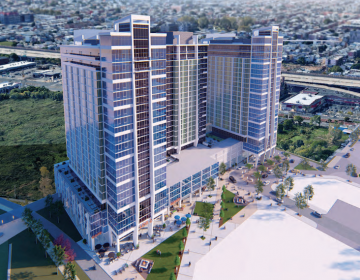In Festival Pier a chance to set new course for waterfront development
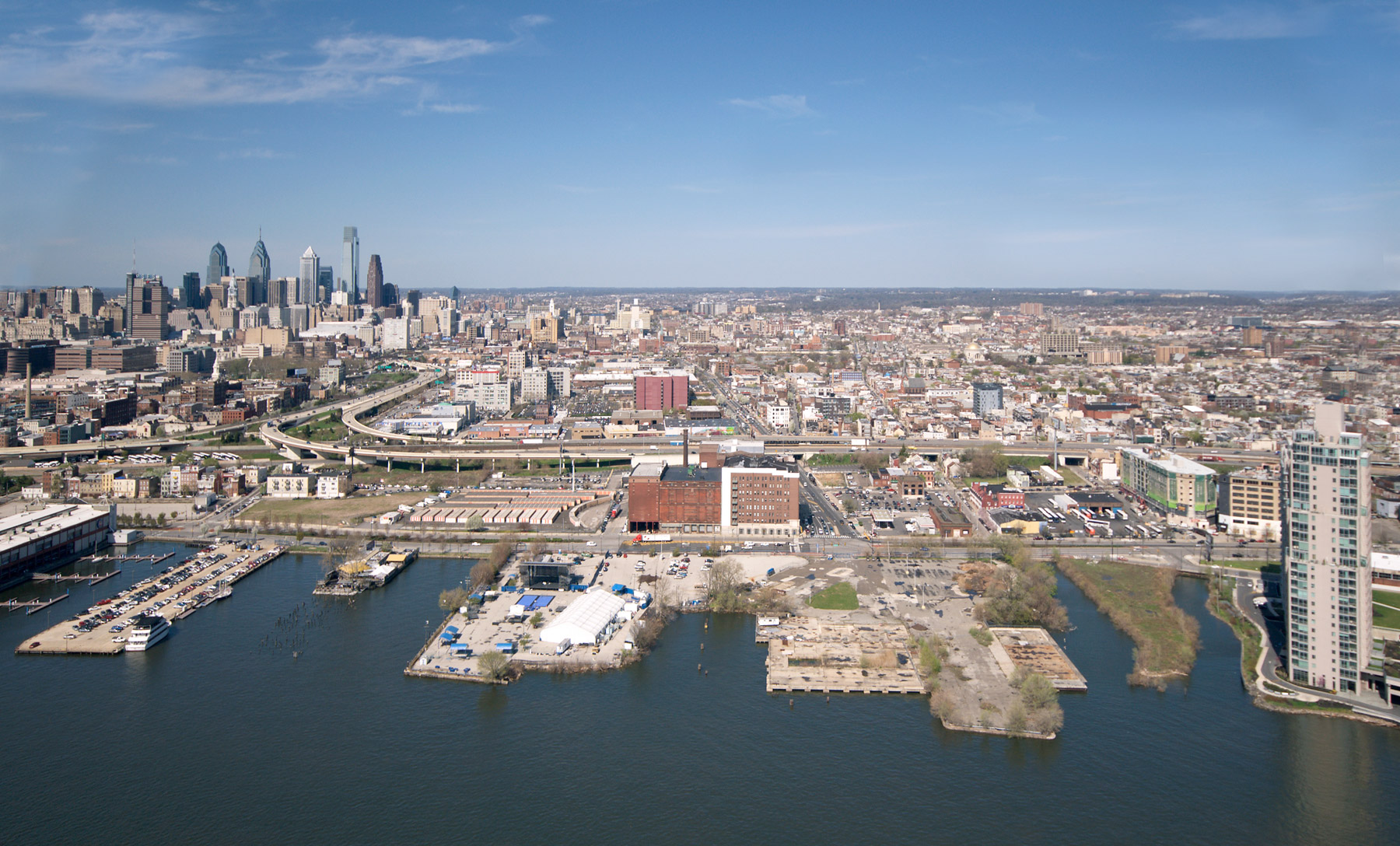
This May I’ll go see The Replacements play at Festival Pier – one of many seasonal concerts that will bring the drab slab at the end of Spring Garden Street fleetingly to life. It could be the last time I see this band – reunited, long in the tooth, and like Festival Pier playing on borrowed time.
The Delaware River Waterfront Corporation (DRWC) is seeking a developer to craft Festival Pier’s next act as a different kind of waterfront hub, where public space is balanced with mixed-use private development. It’s DRWC’s big opportunity to advance high standards for new development on the Delaware waterfront and our chance as a city to get the kind of riverfront spaces we’ve been dreaming on for years.
Festival Pier was identified as one of three significant sites in the Master Plan for the Central Delaware, adopted in 2012. Like Penn’s Landing and the piers at the foot of Washington Avenue, Festival Pier is a publicly controlled waterfront site. Its successful redevelopment is seen as key to stimulating new life on the waterfront and stoking interest in redeveloping nearby properties.
“For us Penn’s Landing would be the largest site, but we think [Festival Pier] is the site that is ready to go, for this market, at this time,” said Joe Forkin, DRWC’s Vice President for Operations and Development.
Festival Pier’s location has some distinct advantages the other two sites don’t. It’s at the edge of the ever-desirable Northern Liberties neighborhood, just two blocks from the Spring Garden stop on the Market-Frankford El. It has at-grade access to the river and a clear sight line to the river from several blocks up Spring Garden Street. Linking the waterfront to all of the good energy in Northern Liberties will also be aided by “connector street” improvements that will be installed along Spring Garden Street this spring, including new lighting and streetscaping.
“The master plan proposes that the Festival Pier site be redeveloped into a compact, mixed-use residential community that will be surrounded on three sides by the Delaware River. The buildings would be organized around a new park and public plaza that would be activated at the street level by restaurants, retail activities, public events, and a linear water feature that will connect the existing inlet through the plaza to the Spring Garden view corridor.” – Master Plan for the Central Delaware, adopted 2012
Sometimes there’s a yawning distance between what’s in a plan and what is ultimately designed, approved, and built. The success of Festival Pier is going to be an important benchmark in the implementation of the Master Plan for the Central Delaware and the application of the Central Delaware Zoning Overlay. Is the market demand really strong enough? Does the zoning overlay’s bonus structure work well? Can DRWC and the city get a developer to deliver great buildings and welcoming public spaces in a harmonious urban design?
There may be no single waterfront site as ripe and ready for reuse as Festival Pier. But prime does not equate to easy.
It’s no small victory that DRWC will be reviewing responses to a Request for Expressions of Interest (RFEI) this month, testing developer interest in the Festival Pier site. A formal Request for Proposals is likely to follow this summer and, if all goes well, a developer could be selected late this year.
DRWC has spent recent years clearing hurdles to Festival Pier’s redevelopment; meanwhile the economy has steadily improved. DRWC holds long-term land rights and, as of last year, the Commonwealth granted DRWC riverbed rights. That enables DRWC to offer prospective developers a long-term ground lease. Necessary environmental testing and permits are also in progress. Plus, as Forkin said, “Market pressure is now building back again and it seems like an appropriate time.”
Now that DRWC has clear title in hand and approvals pending, they hope developers will find the site more attractive and any forthcoming proposals will be grounded in the site’s complex conditions.
Festival Pier is currently about 11 acres built on several combined piers hanging out over the river. These piers were built from 1900-1960, and have housed Reading Railroad freight, impounded vehicles, and a city incinerator. Recent engineering investigations reveal decay and the site’s industrial past necessitates environmental remediation.
As PlanPhilly previously reported, the engineering firm Thornton Tomasetti recommended shrinking the development site to roughly eight acres by giving up the sections in the deepest water.
“Imagine creating a bathtub” to create a buildable development pad, Forkin explained. The tub would be lined with contiguous metal sheet piles; the site within would be compacted and packed with clean fill. Preliminary estimates from 2013 suggest this site improvement could cost $8 million.
Any filling of the river requires approval from the Army Corps of Engineers and the Pennsylvania Department of Environmental Protection (DEP) along with an agreement for environmental mitigation. DRWC hopes that it will be mitigation enough to shrink the footprint of the site, thereby returning more of the river to free flow and shallow water habitat. Environmental approvals are pending.
To put residential uses on the new site, the DEP will also have to approve plans for environmental remediation to contain any remaining contaminants, which will most likely mean simply capping the development pad. Testing to inform that plan will be completed in May.
Beyond the site’s physical conditions, there are also important constraints set by zoning and the Master Plan’s principles for development.
Festival Pier is zoned CMX-3, which encourages multi-family residential uses above ground-floor retail. It is also within the Central Delaware Riverfront Zoning Overlay, which comes with a 100-foot height limit and a menu of height bonuses in exchange for amenities like enhanced public access to the river or trail improvements.
“We’re excited that this is going forward. I think this is going to be a real test case because it’s a very large property, and it’s controlled by the DRWC,” said Matt Ruben, chair of the Central Delaware Advocacy Group. “It’s going to be different than most of the waterfront destinations people are familiar with now like Race Street Pier and Washington Avenue Green because it’s intended to include a significant development portion.”
The development program forecast for the full 11-acre Festival Pier site outlined in the Master Plan envisioned “approximately 700 units of housing and 55,000 square feet of retail, dining, and entertainment and 55,000 square feet of service retail…. The order of magnitude value of the project in 2011 dollars is in the range of $250 to $350 million.”
But DRWC is not prescribing a development program in its current RFEI. Instead the focus is on emphasizing the principles of the master plan, giving developers room to determine a workable, financeable mix of uses. Among the core principles any site design will need to incorporate: a 50 foot public promenade on all three waterfront sides, a clear view corridor down the whole width of Spring Garden Street to the river creating a central public space, and active ground floor commercial spaces to enliven the new public space and Columbus Boulevard frontage.
Ruben, also president of Northern Liberties Neighbors Association, said it’s especially important to preserve the entire width of Spring Garden Street as a view corridor all the way to the river, and for the public space created there to be welcoming.
“There needs to be no ambiguity in the design of this project as to where the public space is and where the private space is,” Ruben said. Muddy those waters and the intent and letter of the master plan will be undermined. He adds that the character of the commercial activity framing the public space will need to be very carefully designed so that it supports the public realm.
To Ruben the Festival Pier site is at long last a chance to realize a new type of waterfront development, the kind neighbors and waterfront advocates have always wanted.
Public control means there is no excuse for not getting Festival Pier just right. DRWC is driving this process and advocates will be able to participate in the redevelopment process at every step. It’s an extraordinary chance to send a strong message about the caliber and character of private development and public space that Philly expects for the Delaware waterfront. It’s an opportunity we can’t afford to tank.
WHYY is your source for fact-based, in-depth journalism and information. As a nonprofit organization, we rely on financial support from readers like you. Please give today.



